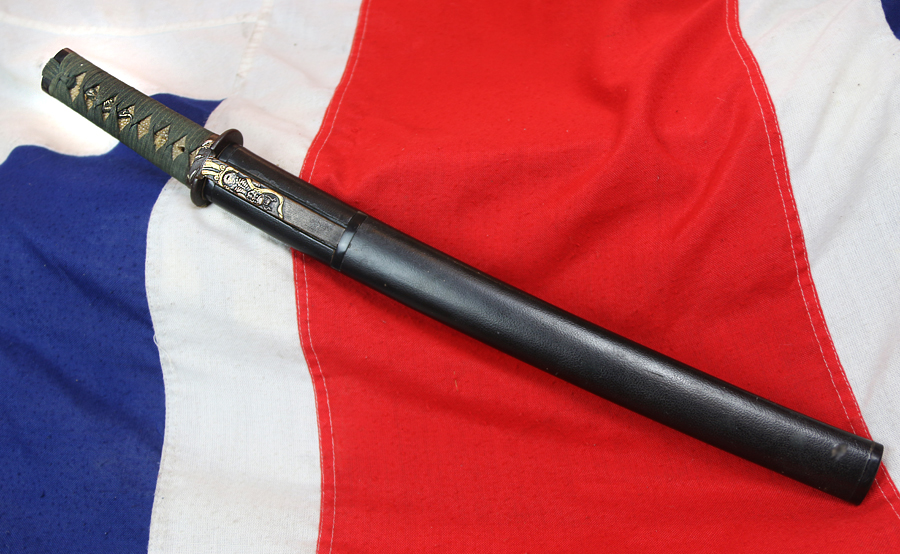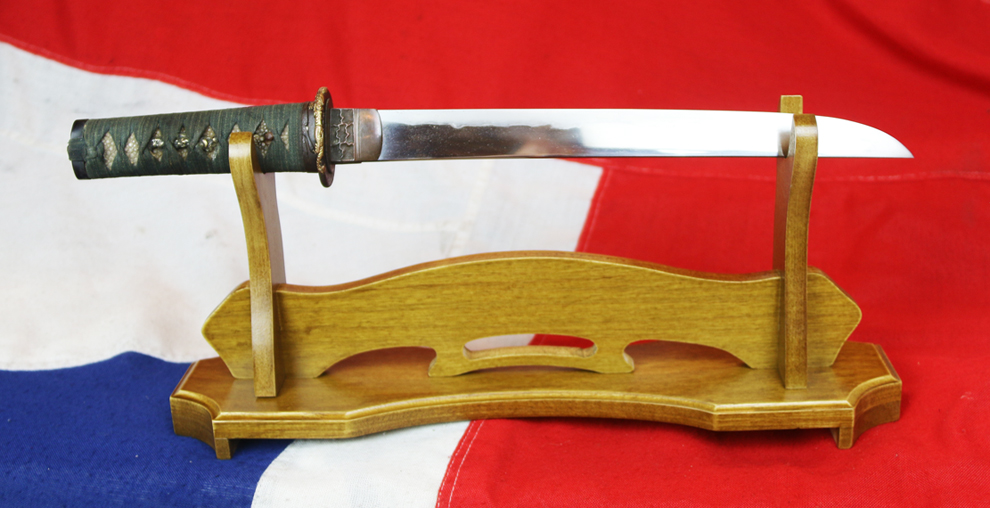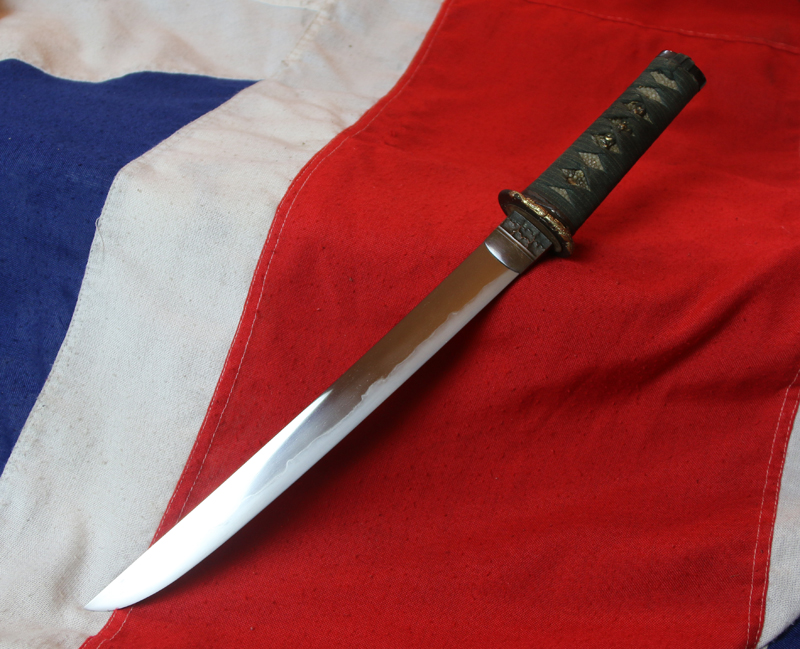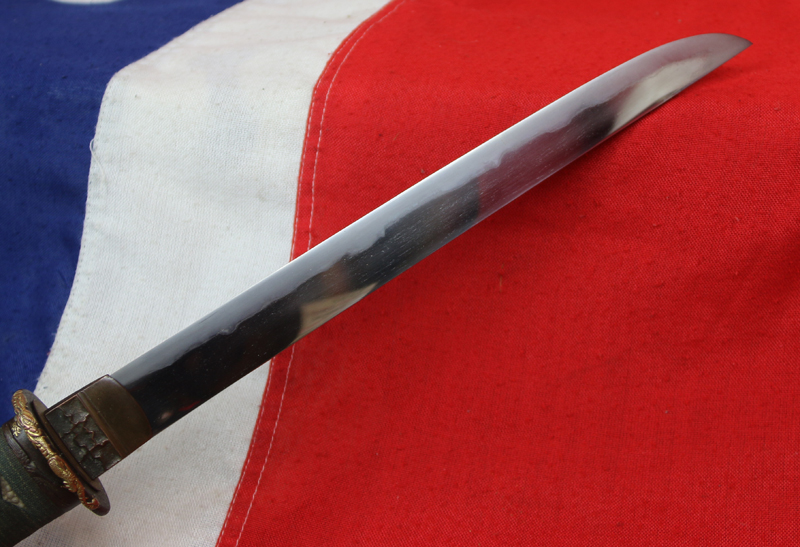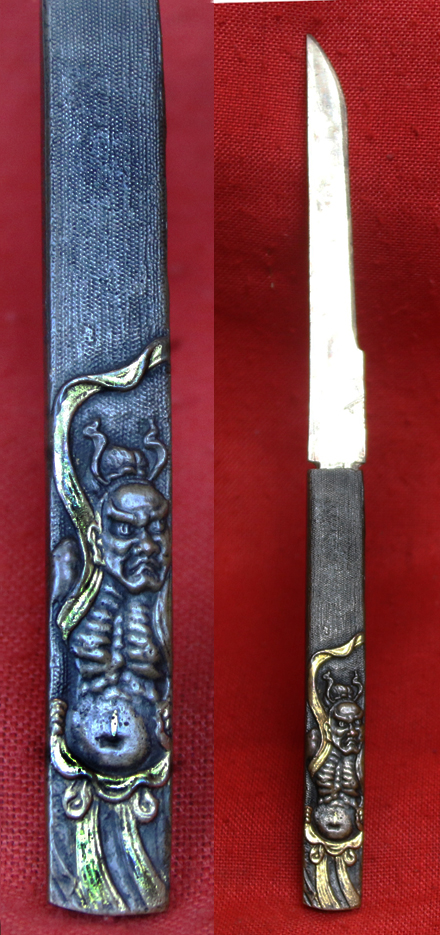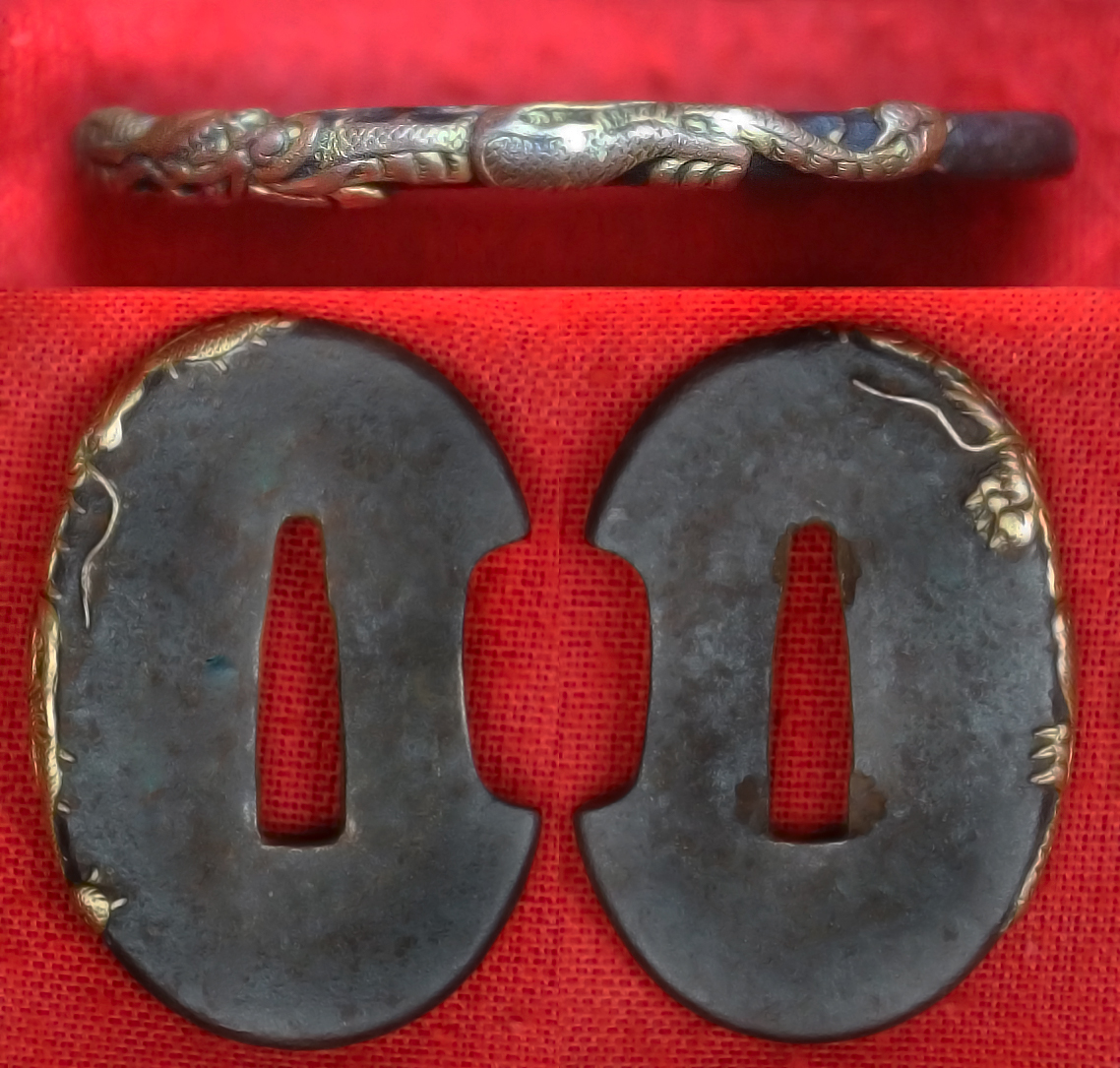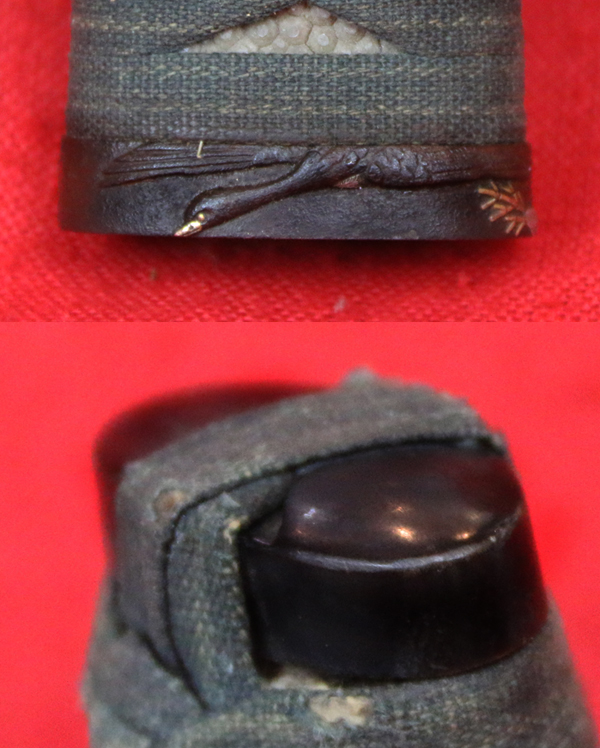A Beautiful & Impressive Shinto Period Long Samurai Tanto Circa 1650
In all original Edo period fittings, including a pair of dragon menuki underneath original Edo two colour striped tsuka-ito, a flying goose in iron Higo fuchi complimented with a carved buffalo horn kashira, a super tsuba in iron with a takebori dragon around half of the edge to match the menuki. Original Edo lacquer saya in black ishime stone finish inset with an original Edo Kogatana utility knife, of a fine Oni demon tokebori kozuka on a nakago ground of patinated copper, the demon has a pure gold decorated sash onlaid. The habaki blade collar is finely and deeply chiselled at the botom half with a plain contrasting top half. The hira-zukuri blade is beautifully polished with a very clear and well defined deep notare hamon. The whole tanto is very attractive indeed, and all of the fittings, wrap tsuka and saya have been likely completely untouched or restored in around 150 years. The tanto is commonly referred to as a samurai's knife or dagger. The blade can be single or double edged this one is single edged with a length between 15 and 30 cm (6-12 inches, in Japanese 1 shaku). The tanto was designed primarily as a stabbing weapon, but the edge can be used for slashing as well. Tanto are generally forged in hira-zukuri style (without ridgeline), meaning that their sides have no ridge line and are nearly flat, unlike the shinogi-zukuri structure of a katana. Some tanto have particularly thick cross-sections for armour-piercing duty, and are called yoroi toshi. The tanto was invented partway through the Heian period. With the beginning of the Kamakura period, tanto were forged to be more aesthetically pleasing, and hira and uchi-sori tanto becoming the most popular styles. Near the middle of the Kamakura period, more tanto artisans were seen, increasing the abundance of the weapon, and the kanmuri-otoshi style became prevalent in the cities of Kyoto and Yamato. Because of the style introduced by the tachi in the late Kamakura period, tanto began to be forged longer and wider. The introduction of the Hachiman faith became visible in the carvings in the hilts around this time. The hamon (line of temper) is similar to that of the tachi, except for the absence of choji-midare, which is nioi and utsuri. Gunomi-midare and suguha are found to have taken its place.
During the era of the Northern and Southern Courts, the tanto were forged to be up to forty centimetres as opposed to the normal one shaku (about thirty centimetres) length. The blades became thinner between the uri and the omote, and wider between the ha and mune. At this point in time, two styles of hamon were prevalent: the older style, which was subtle and artistic, and the newer, more popular style. With the beginning of the Muromachi period, constant fighting caused the greater production of blades. Blades that were custom-forged still were of exceptional quality. As the end of the period neared, the average blade narrowed and the curvature shallowed Overall 21.25 inches long, blade 12 inches 1 shaku long tsuba to tip.
Code: 23041

